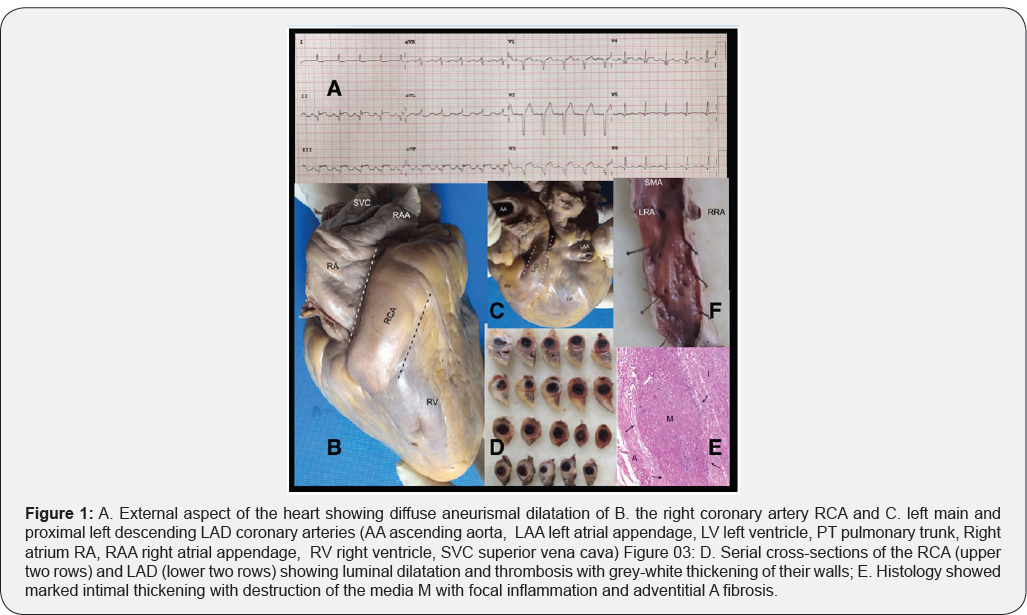A Rare Cause of Fatal Myocardial Infarction-Juniper Publishers
Keywords
Keywords: Arteritis; Takayasu; Coronary aneurysm; Massive myocardial infarctionion
Case Report
A 25-year-old male without any conventional coronary artery disease risk factors and history of untreated acute coronary syndrome a year back presented with rest angina and cardiogenic shock. On physical examination, her peripheral pulses though feeble, were palpable and there was no vascular bruit. There was an auscultable S3 and echocardiography suggested acute inferior wall and remote anterior wall myocardial infarction. (ECG Panel A) Despite attempts at resuscitation, the patient soon succumbed to refractory ventricular fibrillation. An autopsy was requisitioned. Gross examination of the heart at autopsy revealed humongous dilated, thrombus-laden coronary arteries (panel B, C, D). Histo-pathological examination with haematoxylin- eosin staining showed features of pointing towards a diagnosis of healing aortoarteritis with coronary involvement. Another remarkable observation was similar affection of the infra-renal aorta and right internal iliac artery- an exceedingly rare finding in Takayasu disease (panel E) (Figure 1).

Takayasu arteritis is common in Asian and Indian subcontinent [1]. An enigma since it was first described one century ago. It is "an idiopathic inflammatory disease of the large elastic arteries occurring in the young and resulting in occlusive or ectatic changes mainly in the aorta and its immediate branches as well as the pulmonary artery and its branches" [2]. About 8-12 percent patients can have significant affection of coronaries as well [3]. Although affects young females generally below age of 40 although males can also be affected. This case highlights the causal role of aorto-arteritis with subsequent coronary aneurysm formation and thrombosis as an often-missed aetiology of myocardial infarction. The histopathological features have been described very well by Kinare et al. [4]. Any young patient with no conventional risk factors should have their peripheral pulses examined in order not to miss this important treatable cause.
For more Open Access Journals in Juniper Publishers
please click on: https://juniperpublishers.com/open-access.php
For more articles in Open Access Journal of Cardiology & Cardiovascular Therapy please click on: https://juniperpublishers.com/jocct/index.php


Comments
Post a Comment